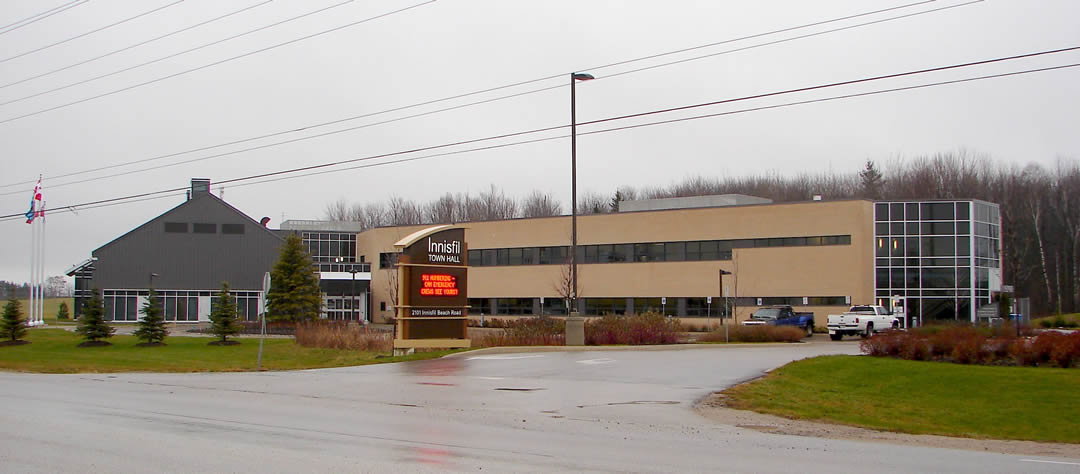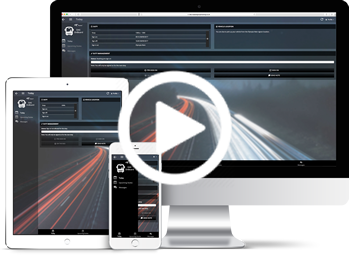The Canadian case of a compromise too far and why UK local authorities should beware
A version of this article first appeared in Local Transport Today (Issue LTT781)
Why a loss of control can’t be the price to pay for the benefits of Uber-style transport networks
By John Beard at Trapeze Group
Imagine an average UK town or region planning its public transport strategy. You’d expect to see buses at the core of the approach, with routes delivered according to their commercial viability and the typical requirements of commuters as they travel for leisure activities and public services like hospitals. What you wouldn’t expect to see is the local authority handing over its entire public transport responsibilities to Uber.
But this isn’t as outlandish as it sounds. It has recently happened in the town of Innisfil, in Ontario, Canada, which embarked on the experiment in 2017. Residents of the town open their ‘Innisfil Transit’ app, which offers subsidised Uber rides between a network of ‘hubs’ such as libraries, municipal buildings and the recreation centre. These rides cost the passenger an average of CAD$5, with the city picking up the rest of the bill.
The experiment has been well-received by many citizens – but introduced a multitude of downsides for the city including social, economic and environmental challenges. Local authorities in the UK need to sit up and beware.
The Innisfil positives
The experiment in Innisfil was initially seen as an innovative solution to the challenges of providing effective public transport in a typical sprawling North American town, whose widely-spaced buildings and large plots make running effective public transport a real challenge. The cost of setting up three new bus routes to service the town – population just 40,000 – was estimated at nearly CAD$1m. Uber seemed to offer a more flexible and cost-effective alternative.
It has been hugely popular among many residents, with 85,943 trips made using the service last year. Meanwhile the increase in Uber drivers – up to 2,203 in the town in 2018 – has offered sustainable additional income to many residents.
This ‘on-demand’, app-sourced transport model does indeed provide flexibility and convenience to riders and an innovative model for the town’s authority to follow, and on these counts, it has been a success. However, this success has come at a heavy price for the local authority.
How Innisfil lost control
For a start, the service has greatly increased the number of vehicles on the road. This has an obvious negative environmental impact. It is worth underlining a recent study in the journal Science Advances which found that Uber and Lyft are the biggest contributors to San Francisco’s crippling traffic congestion.
Air quality and congestion are serious concerns in many UK cities also, with a study this spring finding that two million Londoners are living with illegal levels of air pollution.
It also leaves the local authority with fewer options when it comes to promoting modal shift. Reliance on a large number of low-capacity vehicles means reliance on a large number of drivers, and therefore reduces flexibility for the local authority just as it increases it for passengers. Future planning has become more difficult as Uber has increased congestion and left the local authority with fewer options to use as alternative transport modes.
However, most concerning is the loss of control the local authority has experienced over costs. The success of the model has, ironically, ended up costing the town’s local authority more than the CAD$1m bus route options it initially mapped out.
Because the authority subsidises each ride, the more popular the service becomes, the more costly it also becomes.
The total cost to the authority is projected to reach a hefty CAD$1.2m this year – this being in spite of the authority introducing measures which on a traditional public transit system would be seen as outrageous – with a limit on the number of rides a resident can take per month, and a planned 20% price increase, up to CAD$6 per ride.
Reducing choices in the transport mix reduces opportunities for optimisation. The local authority at Innisfil has so narrowly focused the public transit offer that it has sacrificed the flexibility to increase the number of transport modes and diversify it can offer.
This has resulted in a reduced ability to offset rising costs per journey with alternative transport modes that might have proved more cost-effective.
Ultimately, the local authority no longer has sufficient control over the Innisfil public transport network. The balance has shifted too far away from authority control in favour of end-user convenience and introduced hefty new costs into the bargain as well.
Delivering the Uber convenience model in a managed way
How, then, can local authorities achieve the benefits sought by Innisfil without shifting that balance too far away from their control?
Uber has ushered in a new era of expectations for convenience and flexibility which local authorities must take into account if they don’t want to find themselves on the losing side of competition. And ultimately, there is nothing wrong with the notion of bringing Uber into a mix of wider services. The point is that this convenience should be offered by the local authority without a loss of control.
Local authorities must retain a model which provides a mix of transport options and promotes the best service for the best situation. For example, traditional fleet-led demand-responsive transport (DRT) services can cover the core requirements for commuters and residents accessing public services, with trained, dedicated drivers and wheelchair lift-equipped vehicles essential to fully meet the needs of people with disabilities.
Then, the best use case for Uber “to assist public transit is for ‘last mile’ solutions and to fill the gap for late-night or low use scenarios”, according to Paul Comfort, the former Chief Executive Officer of the US’s 11th largest transit administration, MTA Maryland, and one that could be easily adopted by local authorities in the UK.
Uber, therefore, can be used to ‘top-up’ core public-operated fleets of vehicles, filling in the gaps where it genuinely offers the most cost-effective and appropriately flexible service.
What does this look like in practice? The vehicles and the drivers – in other words, the required infrastructure – is already in place in many cases. The missing piece of the puzzle is the integrated technology platform that can unify all the moving parts in real-time.
This should consist of front-end applications, intuitively providing access to all of the different transport options available to citizens, including traditional local authority and transport operator modes where applicable, and partner services from new alternatives such as Uber.
Behind the scenes, a management platform needs to look after all aspects of the transport modes, from route information to management of key resources like drivers and vehicles. Payments also need an integrated approach, particularly when you bear in mind that some passengers will get their transport entirely or partially funded.
A single integrated transport solution, seamlessly pulling data from multiple sources, consolidating it into a unified format and analysing it in real-time can enable local authorities to offer greater flexibility and convenience to users, while retaining ultimate control over their overall transit offering in a way that avoids the pitfalls of the Innisfil scenario.

John Beard, Account Manager, Trapeze Group (UK)
Here to help
Contact us and speak with one of our specialists:
+44 (0) 808 281 1039
More Info
About Us | Careers | Contact Us | Legal | Privacy
(c) 1999 – 2019 Trapeze Software ULC. All rights reserved
Trapeze Group respects your privacy


